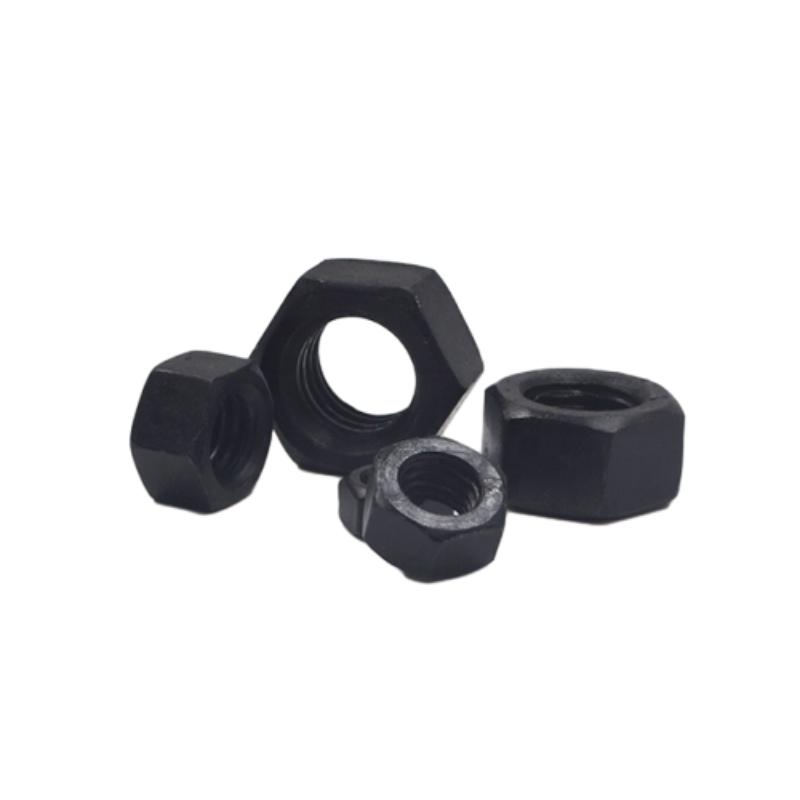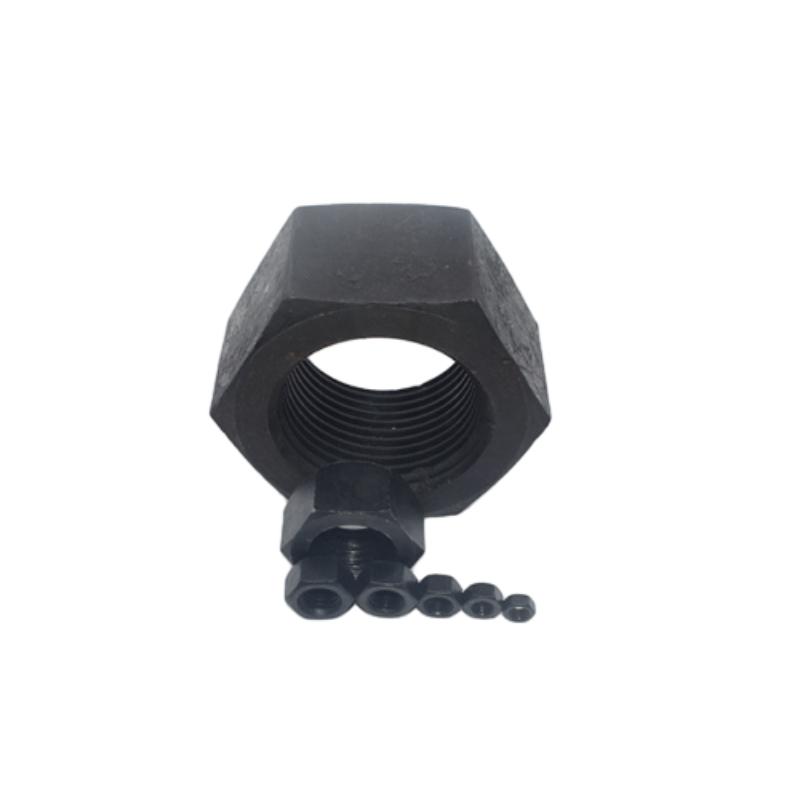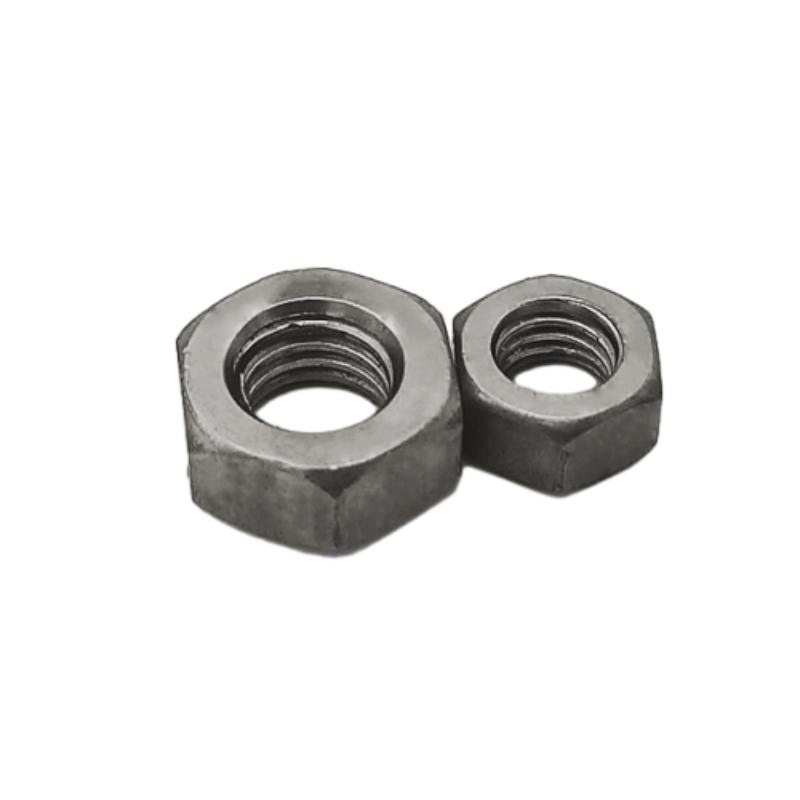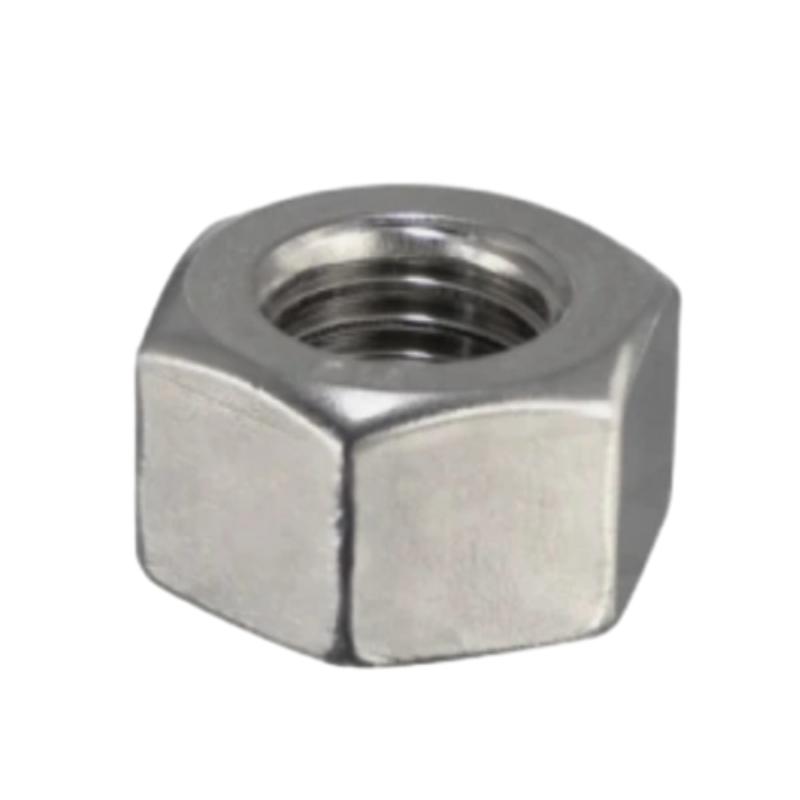Srp . 03, 2025 05:40 Back to list
High-Strength Hex Nuts | AI-Optimized Fastening
Hex nut (also known as hexagon nut) is a foundational fastening component across industries such as energy, petrochemical, metallurgy, water supply, construction, and heavy machinery. With evolving industrial demands, hex nut sizes, advanced materials, and precision standards have become critical, especially in mission-critical applications. This in-depth guide explores hex nuts from basic definitions, technical parameters, and fabrication, to customization and authoritative standards, using the DIN934 Carbon Steel Grade 4.8/8.8/10.9 Zinc/Plain/HDG M8-M20 Hex Nut as a core case study.

1. Industry Overview & Current Trends: The Evolution of Hex Nuts
The hex nut market is projected to steadily grow, driven by infrastructure upgrades, refined safety regulations, and proliferation of automation. According to Grand View Research, the global industrial fastener market reached USD 87.2 billion in 2022, with hex nuts comprising nearly 39%. Demand for engineered solutions like nylock hex nut and high-strength coatings (HDG) is rising, especially in corrosion-prone and vibration applications (hex nylock nut).
- Growth Sectors: Energy (wind/solar); Water infrastructure; Oil & Gas pipelines (highly demand anti-corrosive, HDG hex nut and specialized nylock hex nut).
- Standardization: Tightening global adherence to DIN934, ISO 4032, and ANSI/ASME B18.2.2 standards for interchangeability and quality assurance.
- Digital Transformation: CNC-controlled manufacturing and real-time quality control bolster production precision for custom hex nut sizes.
2. What is a Hex Nut? Structural Insights & Terminology
A hex nut is a six-sided internally threaded fastener designed to mate with a bolt, screw, or threaded rod, forming a resilient fastening system. Key related terms:
- Hexagon nut: Synonym for hex nut, standardized across ISO & DIN.
- Nylock hex nut/hex nylock nut: Incorporate a nylon insert for vibration resistance & prevails loosening.
- Metric nut sizes: Expressed in "M" (e.g., M8, M12, M20) per ISO metric thread conventions.
- Grade: Material strength rating (e.g., 4.8, 8.8, 10.9) defining tensile/yield strength.

- DIN934 standard hex nut features a 120° chamfer angle at both faces, ensuring consistent load distribution.
- Grade 10.9 hex nuts withstand up to 1,000 MPa tensile stress—required for heavy-load industrial works.
- Nylon-insert (nylock hex nut) increases vibration resistance by up to 30% compared to plain nuts (per BoltScience).
3. Hex Nut Sizes & Dimensions: Global Parameter Table
Sizing of hex nut is critical for assembly and project reliability. Below is a comparison of metric (M) and inch-based (imperial) standards for mainstream applications:
| Standard | Size (Designation) | Thread Pitch (mm) | Width Across Flats (mm/inch) | Height (thickness) | Typical Application |
|---|---|---|---|---|---|
| DIN934 / ISO 4032 | M8 | 1.25 | 13 mm | 6.5 mm | Pumps, pipe flanges |
| DIN934 / ISO 4032 | M12 | 1.75 | 19 mm | 10 mm | Structural steel, cranes |
| DIN934 / ISO 4032 | M16 | 2.0 | 24 mm | 13 mm | Wind energy towers |
| DIN934 / ISO 4032 | M20 | 2.5 | 30 mm | 16 mm | Heavy machinery joints |
| ANSI/ASME B18.2.2 | 1/2"-13 | 1.814 (TPI) | 0.75" | 0.5" | Pipeline fittings (US) |
| ANSI/ASME | 1 1/8"-7 | 7 (TPI) | 1.688" | 1.07" | Oil platforms |
4. Product Focus: DIN934 Carbon Steel Grade 4.8/8.8/10.9 Zinc/Plain/HDG M8-M20 Hex Nut
- Standards: DIN934, ISO 4032, ANSI B18.2.2
- Grades: 4.8 (standard), 8.8 (high-tensile), 10.9 (ultra-high strength)
- Surface Coatings Available: Zinc (electroplated), Hot-dip Galvanized (HDG), Plain (oiled)
- Available Sizes: M8 – M20 (hex nuts sizes used across diverse applications)
- Material: Carbon Steel (forged and heat-treated for enhanced ductility & load capacity)
- Compliance: ISO RoHS (restriction of hazardous substances) / EN 14399 / ASTM A563

5. Manufacturing Process of Hex Nut (DIN934, Carbon Steel): Step by Step
- Cold Forging: Delivers consistent grain structure, mechanical properties, and shape regularity.
- CNC Tapping: Ensures thread pitch and depth precision per hex nut dimension standards.
- Surface Treatment: HDG (Hot-dip Galvanizing), Zinc, or plain finish, increasing corrosion resistance per environment.
- Quality Inspection: Go/no-go gauges, microscopy, salt-spray testing (ASTM B117 for anticorrosion).
Product Standards & Certifications: Meeting the Demands of Modern Industry
- ISO 4032: International reference for hexagon nuts with metric threads.
- DIN 934: German standard for general usage; universal usage globally.
- ANSI/ASME B18.2.2: Imperial dimensions, US market.
- ASTM A563: Mechanical requirements for carbon/alloy steel nuts (Grades 5, 8, 10).
- Quality Compliance: Manufacture guided by ISO 898-2 (mechanical properties), ISO 3269 (inspection sampling), and ISO 9001 system.
6. Application Scenarios: Where Hex Nuts Excel
- Petrochemical: Critical flange joints, pipeline installations; corrosion-resistant HDG/nylock hex nuts regularly specified.
- Metallurgy: Structural support in smelting equipment & rolling mills—requiring Grade 8.8/10.9 for load security.
- Water Supply: Pipe unions, pump assemblies demanding easy maintenance—plain and zinc-finish preferred.
- Infrastructure: Bridges, tunnels (M20 hex nuts sizes high-strength requirement).
- Wind Energy: Tower segment fixing, vibration-prone—nylock hex nut variants prevail due to vibration damping.

HDG Grade 8.8 Hex Nuts for Oil & Gas Pipeline Expansion, Middle East (2023)
- More than 250,000 hex nut units (M16, M20) supplied; compliance with ISO 898-2 and API 5L standards.
- Site tests: >72-hour ASTM B117 salt-spray (no rust); field torque retention after 1,200 hours operation = 98.7%.
- End client: State Oil Corp. (Confidential)—project scaled via digital supply chain (real-time delivery & tracking).
- Feedback: "Consistent thread accuracy, zero installation jams, and superior corrosion resistance—our go-to hex nut partner." (Plant Engineering Lead)
Comparison: Why Choose DIN934 Carbon Steel Hex Nut?
| Parameter | DIN934 Hex Nut | Generic Hex Nut |
|---|---|---|
| Precision Tolerance | ±0.13 mm (ISO) | ±0.25 mm |
| Surface Quality | Zinc/HDG, uniform finish | Basic electroplate |
| Yield Strength (Grade 10.9) | ≥ 940 MPa | ~700 MPa |
| Salt Spray Resistance | ≥ 60 h (Zinc); ≥ 600 h (HDG) | ≤ 24 h |
| Applicable Certification | DIN/ISO/ASTM/EN | Often unmarked |
| Sampling Inspection | 100% batch (ISO 3269) | Random |
| Traceability | Lot-coded per ISO 9001 | Uncoded |
7. Customization & Supplier Comparison
- Custom Sizing: CNC-enabled production for non-standard hex nut dimension, oversize, and specialty threads.
- Surface Solutions: HDG, Xylan, Dacromet (custom for corrosive/underwater exposure).
- Bulk Logistics: Automated packing and palletization, with digital traceability and RoHS/REACh documentation.
- Supplier Comparison:
YT-Bolt (DIN934) Average Competitor Materials Certified carbon steel, A-grade input Recycled/ non-certified steel Batch Testing 100% per ISO 3269/EN 14399 70% random lot Lead Time 7-14 days (FCL/LCL) 21+ days Warranty 24 months, full trace 6-12 months, limited Customization Yes (size, finish, markings) Generally no
8. Delivery Lead Time, Quality Assurance & Customer Support
- Standard Lead Time: 7~14 days for standard model hex nut (bulk export, M8-M20).
- Warranty: Minimum 24 months under normal industrial use.
- Support: 24-hour technical hotline, assisted installation documentation, and on-site training available.
- Unique Service: Free sample and technical spec advice for OEM/ODM requirements.
- Traceability: QR code batch tracking for full logistics transparency.
9. Technical FAQ (Hex Nut Professional FAQ Section)
- Q1: What carbon steel grades are most common for hex nut manufacture? A1: Grade 4.8 (standard), 8.8 (high-tensile), and 10.9 (extra-high strength). Each grade refers to a standardized tensile and yield strength, certified by mechanical testing (ISO 898-2).
- Q2: How do nylock hex nuts outperform conventional nuts in vibration settings? A2: The nylon insert provides a positive prevailing torque, preventing self-loosening under dynamic load and vibration, as proven by up to a 30% rise in retention rate (see BoltScience analysis).
- Q3: What is the difference between hex nut dimension "width across flats" and "width across corners"? A3: "Width across flats" is the critical wrench size (e.g., 19 mm for M12). "Width across corners" (e.g., 21.9 mm M12) indicates the max span including two corners (geometry control per DIN/ISO standards).
- Q4: What are the corrosion resistance benefits of Hot-dip Galvanized (HDG) hex nut compared to Zinc-plated? A4: HDG forms a >55μm zinc layer, withstanding 10x salt spray hours versus standard zinc, ideal for marine, outdoor, and high-acidity settings (Galvanizing Association).
- Q5: What are key installation standards for hex nuts sizes and torque? A5: Use metrics per ISO 898-2, EN 14399, and reference torque charts. In precision/critical zones, torque-wrench verification and double-nut lock or nylock nuts are advised to maintain system integrity.
- Q6: Can you specify metric m12 nut size and m20 nut size key dimensions? A6: M12: 19 mm wrench, 10 mm height (DIN934). M20: 30 mm wrench, 16 mm height. Both per DIN/ISO standards. See specifications tables above.
- Q7: What documentation is provided with hex nut deliveries? A7: Material test certificates (MTC), dimensional & batch test reports, coating certification (e.g., salt spray), and EN/ISO compliance statements—all digitally archived for traceability.
10. References & Industry Insights
- Grand View Research – Global Industrial Fasteners Market Size Report
- BoltScience – Nylon Insert Nuts Technical Analysis
- Galvanizing Association– Hot-dip Galvanizing Science
- Engineers Edge – Hex Nut Size Charts
- Eng-Tips Industry Forum – Fastener & Hex Nut Applications
- Journal of Mechanical Science and Technology (Hex Nut Studies)
- Fastener World Magazine –


